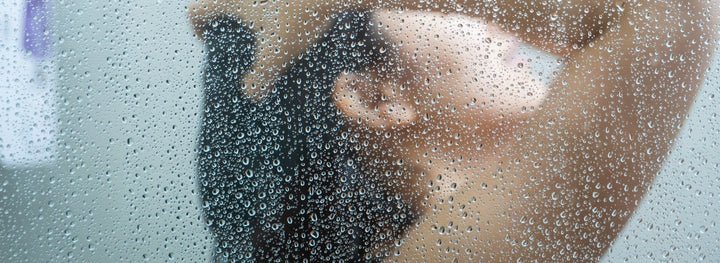The Essential Clothing Guide for Seasonal Transitions
As seasons change, so do our wardrobes. Transitional periods can present challenges in terms of dressing appropriately for fluctuating temperatures a Essential Clothing nd unpredictable weather. This guide offers practical tips and essential clothing items to help you navigate seasonal transitions effortlessly while ensuring you look stylish and feel comfortable.
1. Understanding Seasonal Transitions
Seasonal transitions typically occur during spring and autumn, where temperatures can vary significantly throughout the day. Layering becomes crucial during these periods, allowing you to adjust your clothing as needed. Key factors to consider include:
- Temperature Variability: Mornings may be chilly, while afternoons can heat up, requiring clothing that can adapt.
- Weather Changes: Rain, wind, and changing humidity levels can impact comfort, so it’s essential to have clothing that protects against the elements.
2. Essential Clothing for Spring Transitions
Spring often brings unpredictable weather, making it essential to have versatile pieces that can be layered. Here are some must-have items:
a. Lightweight Jackets
A stylish lightweight jacket is a spring essential. Look for options like:
- Denim Jacket: A timeless classic that pairs well with almost any outfit. Perfect for casual outings.
- Trench Coat: Offers a sophisticated touch and protects against light rain. Choose a breathable fabric for added comfort.
- Utility Jacket: Functional and fashionable, these jackets often come with pockets and a relaxed fit.
b. Layering Tops
Layering is key in spring. Consider these options:
- Long-Sleeve Tees: Great for cool mornings, these can be worn alone or under other layers.
- Cardigans: Lightweight cardigans can easily be added or removed as temperatures change.
- Lightweight Sweaters: Knitted sweaters in breathable materials are perfect for chilly evenings.
c. Versatile Bottoms
Having the right bottoms can make transitioning between temperatures easier:
- Chinos or Lightweight Trousers: These are breathable and comfortable for both warmer and cooler days.
- Maxi Skirts or Dresses: These can be paired with leggings for warmth or worn alone on milder days.
d. Footwear Choices
Your footwear should also adapt to the season:
- Ankle Boots: Stylish and versatile, they can be worn with jeans, skirts, or dresses.
- Loafers or Sneakers: Comfortable options for daily wear, ideal for walking around during the transition.
3. Essential Clothing for Autumn Transitions
As autumn approaches, the air turns crisp, and the days grow shorter. Here are essential clothing items to embrace this seasonal change:
a. Warm Layers
Layering becomes even more critical in autumn. Key pieces include:
- Wool Sweaters: Thick, cozy sweaters in various styles (crewneck, turtleneck) are perfect for chilly days.
- Long-Sleeve Shirts: Lightweight long-sleeve shirts can be worn alone or layered under sweaters.
- Hoodies: A great casual option for added warmth, perfect for lounging or running errands.
b. Outerwear Options
Investing in good outerwear is crucial for autumn:
- Puffer Jacket: Lightweight yet warm, ideal for layering without bulk.
- Peacoat or Wool Coat: A stylish option that offers warmth and sophistication for more formal occasions.
- Raincoat: As autumn often brings more rain, a breathable, waterproof coat is essential.
c. Bottoms for Cool Weather
Autumn provides the perfect opportunity to bring out the heavier bottoms:
- Jeans: Darker washes are often favored in fall. Look for high-waisted styles for added warmth.
- Trousers or Corduroy Pants: These add texture and warmth while maintaining a polished look.
- Leggings: Comfortable and versatile, perfect for layering under dresses or oversized sweaters.
d. Footwear for Cooler Days
Choose footwear that suits both style and practicality:
- Boots: Knee-high or ankle boots can elevate your outfit and provide warmth.
- Sneakers: Great for casual outings and perfect for layering with thicker socks.
4. Accessories for Seasonal Transitions
Accessories can make a significant impact during seasonal transitions. Here are some essentials to consider:
- Scarves: Lightweight scarves for spring and heavier knit scarves for autumn can add warmth and style.
- Hats: A stylish fedora or a beanie can complete your look while providing extra warmth.
- Umbrellas: A compact umbrella is a must-have for unexpected rain showers.
- Sunglasses: Protect your eyes on sunny days, especially during spring when the sun is more prominent.
5. Color and Fabric Choices
When transitioning between seasons, pay attention to color and fabric choices:
- Color Palettes: Spring often features light, pastel colors, while autumn embraces rich, warm hues like burgundy, mustard, and forest green.
- Fabric Selection: Breathable fabrics such as cotton and linen are ideal for spring, while wool, cashmere, and heavier blends work well for autumn.
6. Tips for Effective Seasonal Transitions
- Layer Smartly: Always layer your clothing so you can easily add or remove items based on temperature changes throughout the day.
- Invest in Versatility: Choose pieces that can be mixed and matched with various outfits to maximize your wardrobe.
- Stay Prepared: Check the weather forecast before leaving home, and carry an extra layer or light raincoat if rain is expected.
- Practice Mindful Shopping: Invest in quality pieces that will last through multiple seasons rather than trendy items that may only be worn once.
Conclusion
Navigating seasonal transitions requires thoughtful Essentials Sweatpants planning and versatile clothing choices. By investing in essential pieces that prioritize layering, comfort, and style, you can adapt to changing weather while maintaining your unique sense of fashion. Embrace the beauty of each season, and let your wardrobe reflect the vibrant changes in the world around you.






